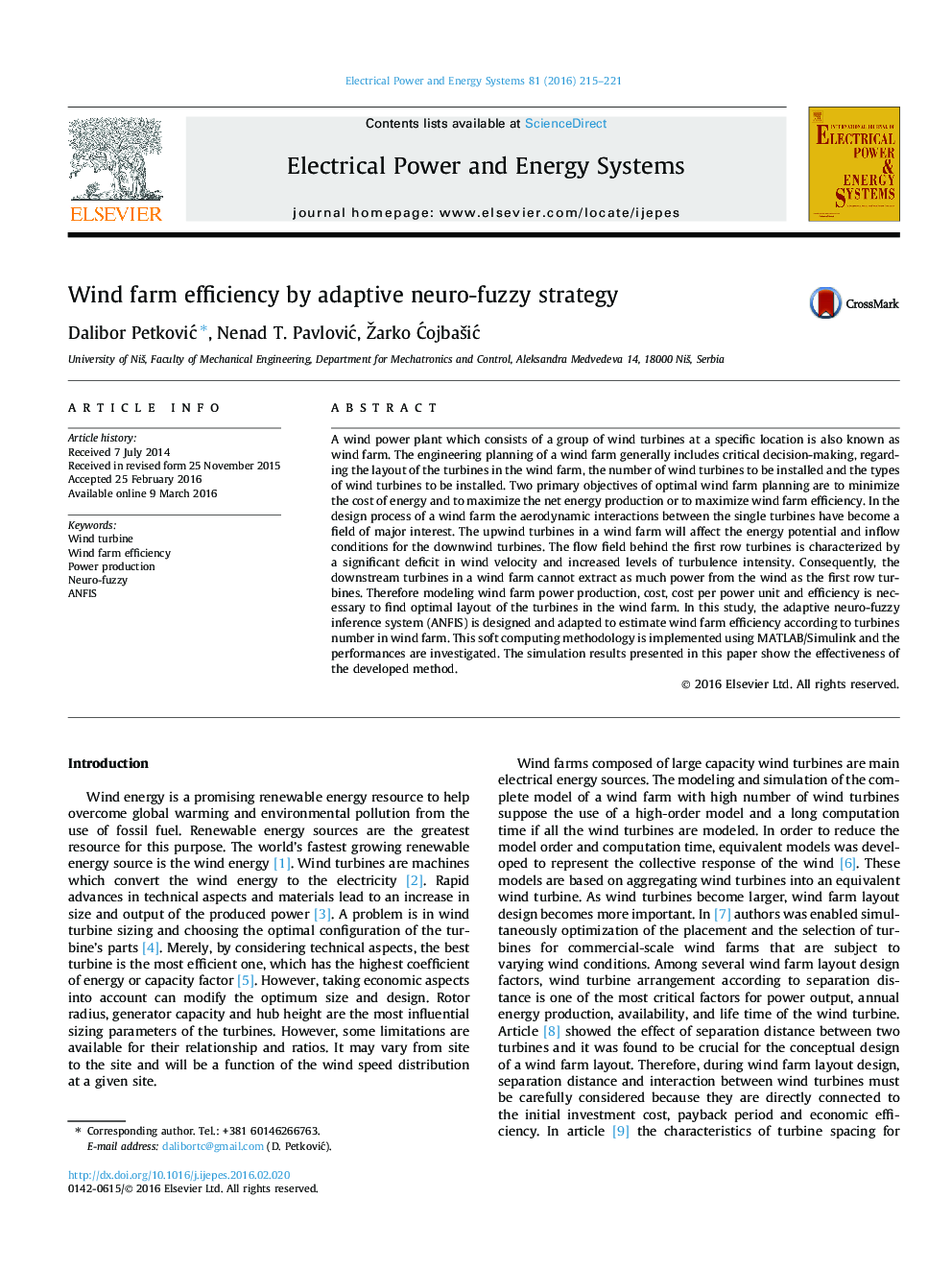| کد مقاله | کد نشریه | سال انتشار | مقاله انگلیسی | نسخه تمام متن |
|---|---|---|---|---|
| 399176 | 1438719 | 2016 | 7 صفحه PDF | دانلود رایگان |
• Minimize the cost of energy and maximize the energy production of wind farm.
• The wake effect of interactions between turbines.
• Adaptive neuro-fuzzy (ANFIS) estimator of wake effect influence.
• Estimation of wind farm efficiency according to the number of wind turbines.
A wind power plant which consists of a group of wind turbines at a specific location is also known as wind farm. The engineering planning of a wind farm generally includes critical decision-making, regarding the layout of the turbines in the wind farm, the number of wind turbines to be installed and the types of wind turbines to be installed. Two primary objectives of optimal wind farm planning are to minimize the cost of energy and to maximize the net energy production or to maximize wind farm efficiency. In the design process of a wind farm the aerodynamic interactions between the single turbines have become a field of major interest. The upwind turbines in a wind farm will affect the energy potential and inflow conditions for the downwind turbines. The flow field behind the first row turbines is characterized by a significant deficit in wind velocity and increased levels of turbulence intensity. Consequently, the downstream turbines in a wind farm cannot extract as much power from the wind as the first row turbines. Therefore modeling wind farm power production, cost, cost per power unit and efficiency is necessary to find optimal layout of the turbines in the wind farm. In this study, the adaptive neuro-fuzzy inference system (ANFIS) is designed and adapted to estimate wind farm efficiency according to turbines number in wind farm. This soft computing methodology is implemented using MATLAB/Simulink and the performances are investigated. The simulation results presented in this paper show the effectiveness of the developed method.
Journal: International Journal of Electrical Power & Energy Systems - Volume 81, October 2016, Pages 215–221
